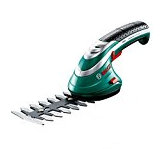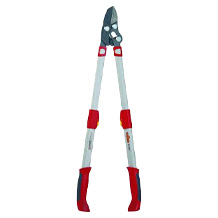Cordless hedge trimmer purchasing advice: how to choose the right product
- What You Need to Know
- Cordless hedge trimmers offer complete freedom of movement in the garden, without cables and regular refilling of the tank.
- Many cordless hedge trimmers are very powerful and, depending on the model, can even compete with petrol-powered machines.
- When choosing the right cordless hedge trimmer, you should pay attention to the battery capacity and voltage, the weight, the blade length and any extras.
- In addition to correct charging, regular maintenance is also a basic requirement for a long service life of cordless hedge trimmers.
Beautifully trimmed – thanks to cordless hedge trimmer
Every year in spring, when the first flowers sprout, the branches and leaves of rampant hedges and bushes also protrude into the well-ordered home garden. Then it is time to reach for the hedge trimmer and give them their annual pruning. Depending on the size and age of the hedge, manual shears are of little use. More suitable tools are needed here. A cordless hedge trimmer is the first choice for small or medium-sized gardens. Whether bushes, shrubs or hedges, the shears trim all branches. Moreover, it convinces with a maximum of flexibility, because thanks to the rechargeable battery it can be used everywhere. The range of movement is not restricted by a cable and thanks to modern technology, battery-powered shears can also convince in terms of performance.
The construction of a cordless hedge trimmer
Cordless hedge trimmers, like other motor-driven hedge trimmers, can hardly be compared to manual hedge trimmers. While manual hedge trimmers were more like oversized scissors, motor-driven devices have a sword-shaped shear head that is powered by a petrol or electric motor. Cordless hedge trimmers consist of a so-called hand part with motor and handle as well as the blade with a cutting length of 40 to about 70 centimetres.
For better ergonomics, many manufacturers do not install the handpiece in a straight line to the hedge trimmer’s blade. It is usually slightly angled to simplify the cutting process. On the blade itself there are two to three so-called cutter bars with numerous small teeth. One of these bars is firmly anchored, while the other is moved by means of the motor; the teeth are moved along the blade, which makes cutting with the hedge trimmer possible. The maximum cutting strength of the hedge trimmer results from the spacing of these small cutting edges.
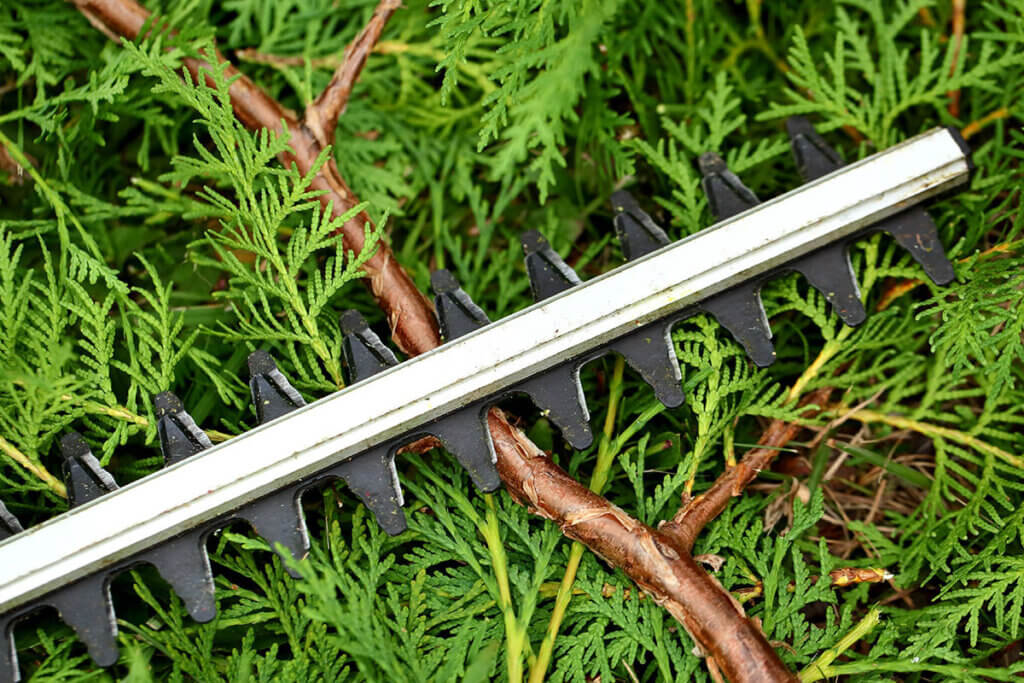
What are the advantages of a cordless hedge trimmer?
A cordless hedge trimmer can be used wherever a petrol-powered trimmer is used. In direct comparison, the battery-powered version is somewhat weaker in terms of performance, but it scores in terms of handling and flexibility. A battery-powered hedge trimmer can be used anywhere, independent of the mains supply. After all, there is no cable to get in the way when cutting the hedge. Users have full freedom of movement as long as the battery is charged. Working with the hedge trimmer is therefore mainly dependent on the battery. Once it is discharged, you have to wait until it is fully charged again to continue working. During operation, a battery-powered hedge trimmer is much quieter than a petrol-powered version. In addition, a battery model does not produce any unpleasant-smelling exhaust fumes. One of the biggest advantages, however, is the low weight of the cordless hedge trimmer. This means that even overhead work is no problem.
Pro points
- Low noise level
- Very light
- No exhaust fumes
- Freedom of movement
Drawbacks
- Limited battery life
- Less power than petrol models
What to look for when buying a cordless hedge trimmer
Every spring, hobby gardeners and landscapers are faced with the task of trimming shrubs, bushes and hedges in gardens and public green spaces. The right cordless hedge trimmer is a great help. Decisive purchase criteria are the battery and cutting performance as well as the weight, handling and noise level.
The battery as the heart
The battery is probably the most important component of the cordless hedge trimmer. It not only influences the maximum operating time of the tool, but also its performance. Even though the performance of mains and petrol-powered hedge trimmers is significantly higher in comparison, some cordless models achieve a considerable, almost good performance. However, if the battery is too weak, the hedge trimmer will not be able to cut thicker branches or heavily overgrown bushes.
Today’s modern rechargeable batteries from Stihl, Metabo, Fuxtec and Einhell no longer correspond to the partly outdated nickel-cadmium or nickel-metal hydride rechargeable batteries. Disadvantages such as an early voltage drop, too short runtimes or a loss of capacity are no longer to be found in the newer lithium-ion batteries. These batteries are now considered standard by the various manufacturers. They offer longevity and constant performance.

The battery runtime varies between about 30 and 50 minutes, depending on the model and manufacturer. Higher-quality cordless hedge trimmers achieve average operating times of 70 minutes and more. How long the runtime actually is depends on the work being done. The thicker the branches, the more power is required and the faster the battery runs down. However, to enable a comparison between the individual models, the manufacturers indicate the battery runtime in idle mode. In some devices, the battery can be replaced so that you can always have a charged replacement battery at hand. In other models, the battery is permanently installed, but many can be fully recharged within an hour, so you only have to interrupt your work for a short break.
Cutting performance

The cutting power of the hedge trimmer indicates how powerful the model is. For a long time now, there has been a persistent prejudice that cordless hedge trimmers are hardly powerful enough to cut thicker branches or shrubs. However, the often installed 36-volt battery provides enough power to trim even beech hedges with their hard branches. Some models only have an 18-volt battery, while others have a 48-volt battery.
The cutting strength

The cutting performance should not be confused with the cutting thickness, which is expressed by the blade spacing of the hedge trimmer. This indicates how thick the branches to be cut may be. The cutting thickness should correspond to the branch diameter of the hedge or shrubbery. The blade spacing is usually between 15 and 35 millimetres. So before you make a choice, see what work is involved in your garden and what the maximum thickness of the branches to be cut might be.
The blade and the cutting length
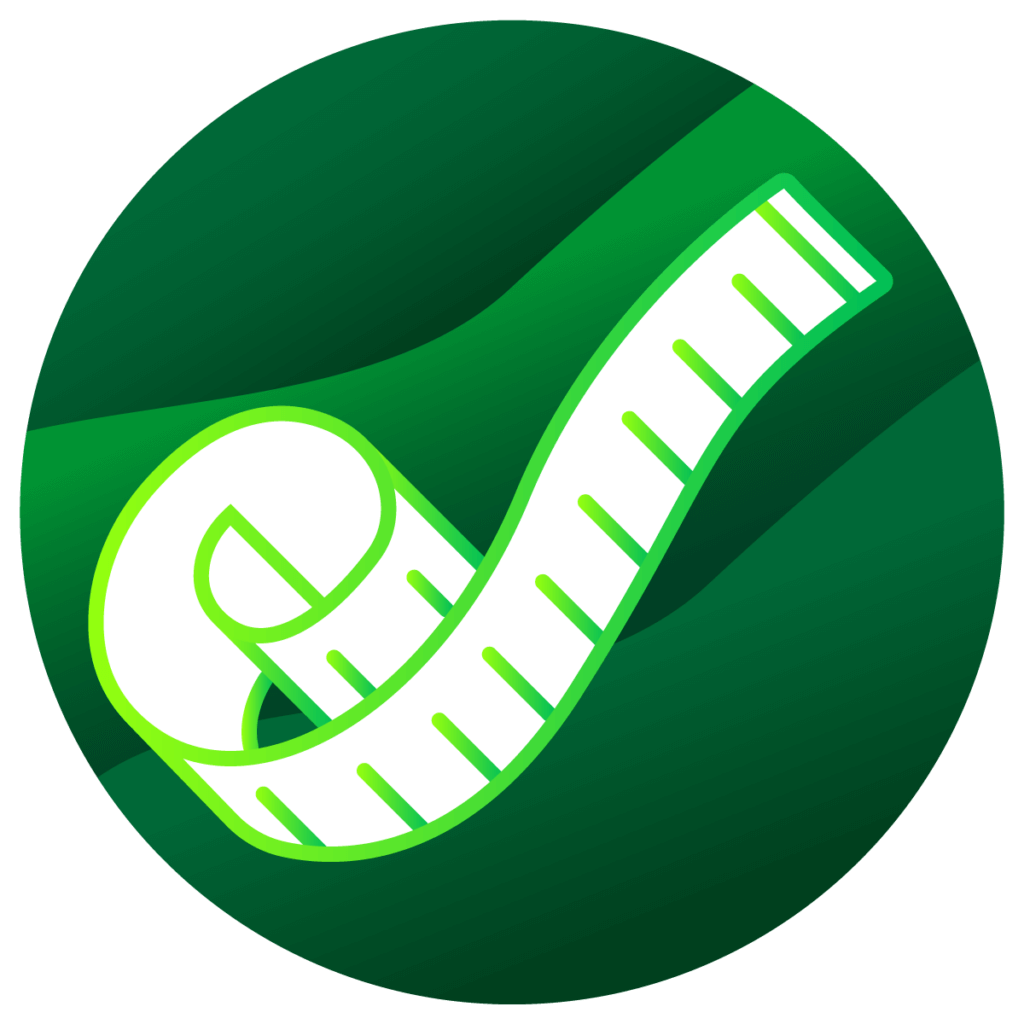
The blade length refers to the blade attachment at the front of the hedge trimmer, including the guide guard. It is usually between 40 and 70 centimetres. Shorter versions are mainly recommended for delicate cuts, while you can also work on larger areas with a long blade. The length of the actual blades is called the cutting length. As part of the sword, the cutting length is usually between 40 and 60 centimetres. The cutting length is also decisive for the range and accuracy of the cut.
Weight and handling

The light weight of a cordless hedge trimmer is one of its biggest advantages over petrol hedge trimmers. The longer you have to work with the hedge trimmer, the more the weight becomes noticeable. It is usually between about two and five kilograms. This makes cordless hedge trimmers significantly lighter than petrol models that weigh five to seven kilograms. The low weight makes cordless hedge trimmers easier to handle. It also makes overhead work much easier.
How loud is a cordless hedge trimmer?
Even though cordless hedge trimmers are considered to be comparatively quiet gardening tools, the noise level depends on the model and the work being carried out. Some devices reach a noise level of up to 90 decibels. This value is comparable to the volume of a hand grinder and can cause hearing damage in the long run. For this reason, you should always wear hearing protection when using the cordless hedge trimmer. Alternatively, there are relatively quiet models whose volume does not exceed a value of about 65 decibels. This means they are quieter than a standard hoover and can be used even over a longer period of time without causing health problems.
What additional functions do cordless hedge trimmers offer?
A popular additional function of many models is the so-called Anti-Blocking-System, ABS for short. This independently changes the direction of travel of the cutter bar if a branch cannot be cut directly. As the blade works on the branch from both sides, the blocking of the cutting edge is automatically prevented and smooth working is ensured. Another feature is protectors that are attached to the end of the cutter bar; they serve as a guide guard and prevent you from hitting a wall behind the hedge, the hard hard floor or similar resistant material with the blade. This would only accelerate the dulling of the cutting edge. Other useful features include an anti-vibration system that reduces vibrations on the handle and an adjustment system that allows the blade and handle to be placed in a suitable position.
Tips and tricks for using a cordless hedge trimmer
The cordless hedge trimmer has long since established itself as a useful tool in the home garden. To ensure that you can use the device for a long time and with consistent performance, regular cleaning and care are indispensable.
Care and cleaning
The performance of the hedge trimmer depends to a considerable extent on the cutting mechanism as well as the cutting edge. To keep these in good condition for years, cleaning after each use of the cordless hedge trimmer is important. In fact, it is recommended to clean not only the numerous small teeth, but the entire blade of the hedge trimmer. Remove small residues of branches or twigs as well as stubborn resins.
Before you start cleaning, remove the battery for safety reasons, if it is removable. This ensures that you do not accidentally start the hedge trimmer while cleaning the blade. Once the battery is removed, the blades can be removed. To do this, simply loosen the screw at the transition from the shear blade to the housing. You can then clean the blades themselves with a resin-dissolving cleaning agent. Before you put the blades back in, you should treat them with a little care oil.
After the cutting blades and the individual cutting edges, pay attention to the transition to the housing. Leaves, small pieces of wood or other debris often get caught here as well. Remove these as thoroughly as possible. This guarantees, among other things, that the screw for fastening the cutting blades is as tight as possible without individual leaves getting caught in between. Here, too, it is advisable to finally apply some oil as well as a corrosion protection to ensure the functionality of the screw.
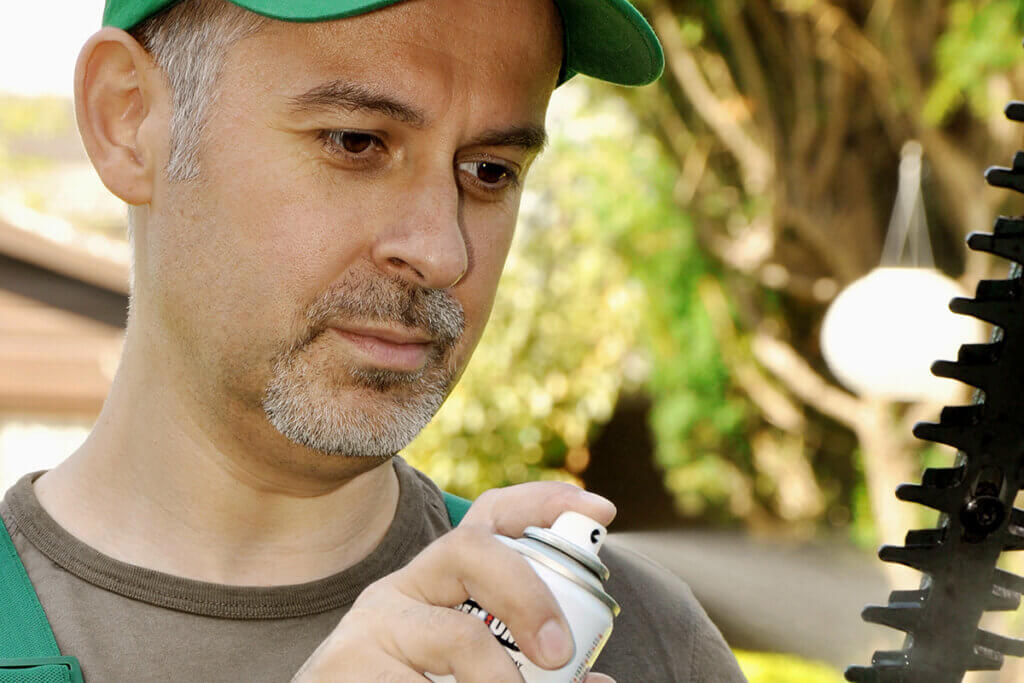
The right storage
The cordless hedge trimmer should be stored in a dry environment that remains frost-free in winter. Storage that is too cold or damp can cause damage to the battery, the contacts or even the entire electronics. An oiled blade cover provides additional protection for the blades. This wets them with oil throughout and protects them from dirt as well as corrosion. Make sure that the oil only touches the metal parts and does not come into contact with the electronics of the machine.
Charging the battery correctly
You no longer have to consider the so-called memory effect with the new lithium-ion batteries of the hedge trimmers. Nevertheless, incorrect charging can cause lasting damage to the battery. To maintain capacity and performance in the long term, it should only be charged when it is almost completely empty. Make sure, however, that you never completely empty the battery. If a battery is completely discharged and is not recharged over a longer period of time, the capacity will suffer. If the battery is connected to the mains for charging, it should not be disconnected prematurely.
Nevertheless, even with the best treatment, a battery will not last forever. Common lithium-ion batteries are suitable for up to 1,000 uses and can withstand them without major problems. If the battery life starts to diminish, the batteries of various models can be replaced.
The right sharpness of the blades
A hedge trimmer is useful in any garden, whether you need to trim a hedge or just smaller shrubs. However, even the best blade will eventually become blunt. Then it is time to sharpen the blades of the shears. To do this, you can either take the tool to a workshop and have it resharpened by a professional or do the sharpening yourself. For this, we recommend using a grinder with a diamond file attachment to achieve a good result.
Many blades are coated by the manufacturer for better protection. This coating is lost when the blades are sharpened and cannot be reapplied. Once your hedge trimmer has been resharpened, proper care of the blade is especially important to prevent rust and other damage.
How to trim the hedge with a cordless hedge trimmer
A hedge should not simply be trimmed on a whim. In order to be considerate of flora and fauna, hedge trimming is subject to certain guidelines. You should also observe the correct pruning to ensure the vitality of the plants.

When can the hedge be pruned?
Annual pruning is intended to contain the hedge and bring it into shape. However, there are some recommendations and even legal requirements for hedge pruning. The Federal Nature Conservation Act prohibits excessive cutting during nesting periods, among other things. Thus, hedge cutting is prohibited in Germany between 1 March and 30 September. Birds, insects and mammals should be able to nest, gather food and live undisturbed during this period. From October to the end of February, radical pruning can then be carried out to stop hedge and shrub growth. This legal restriction does not apply to smaller maintenance cuts or topiary.
How to prune a hedge correctly
There are different shapes and ways to prune a hedge. The most common are the box cut, the oval cut, the selective cut and the trapezoidal cut. Of these variants, the trapezoidal cut with a trapezoid that tapers towards the top is highly recommended. This cut has a decisive advantage: whereas with a cut with vertical sides the lower leaves receive only little light, with a trapezoidal cut the entire foliage receives sufficient sunlight. As a result, the hedge has balanced growth at all points.

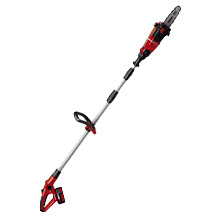
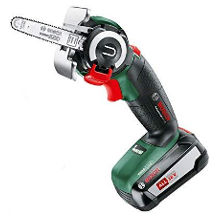

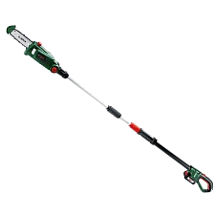

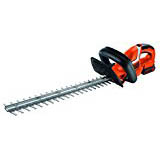
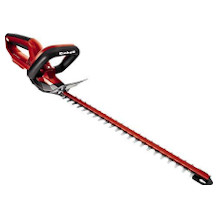
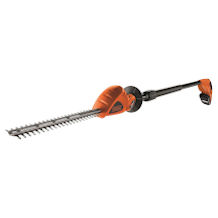
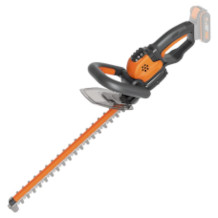
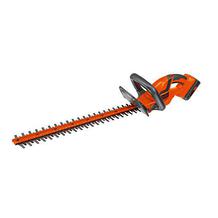
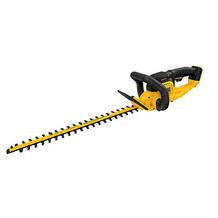
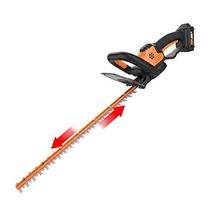

 3,083 reviews
3,083 reviews
